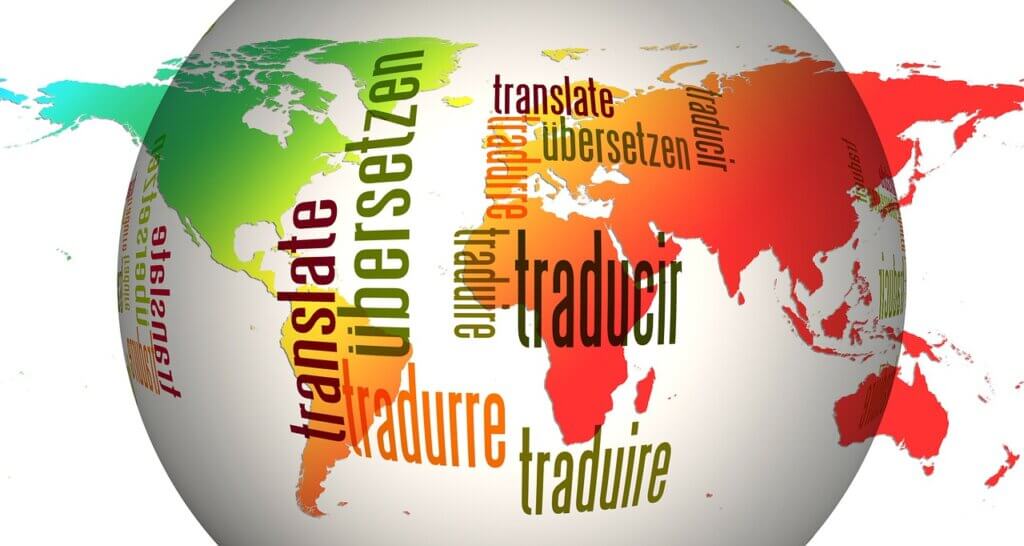After reading this article, you’ll:
- Recognize the vital role of medical interpreter apps in enhancing communication between healthcare providers and patients who speak different languages, particularly the importance of accurate and culturally sensitive real-time translation in medical contexts.
- Appreciate the benefits and limitations of using medical interpreter apps in healthcare settings, including how they can improve patient understanding, satisfaction, and adherence to treatment, while also understanding the scenarios where human interpreters are preferable.
- Gain insights into the future development and potential of medical interpreter apps, including their evolving role in telemedicine and their potential to address global healthcare disparities by providing quality care through accessible, multilingual communication tools.

The diverse population of the United States continues to grow rapidly, with over 67.3 million US residents speaking a language other than English at home. However, many healthcare providers do not offer adequate language services, leading to severe communication barriers between patients and their doctors. Without a medical interpreter present, patients struggle to comprehend diagnoses, causes of illness, and treatment instructions communicated in an unfamiliar language. Doctors likewise fail to gather complete medical histories and descriptions of symptoms from patients unable to express themselves in English.
Medical interpreter apps provide a solution to bridge this communication divide. Powered by artificial intelligence, these smartphone and tablet apps employ real-time interpretation to translate conversations between doctors and patients. They allow patients to communicate symptoms in their native language while also explaining healthcare concepts that do not directly translate across cultures. As the appointment continues, the app provides live interpretation into English for the doctor, and vice versa.
The use of medical interpreter apps during appointments has been shown to greatly increase understanding and satisfaction levels for non-English speaking patients. With clearer communication, patients better comprehend diagnoses and treatment rationales, demonstrating higher adherence to medications and follow-up visits. Overall, medical interpreter apps help patients become more engaged partners in their own care, leading to improved health outcomes.
This technology promises to increase access to qualified interpreters, overcoming cost and availability barriers, especially in rural areas. When used alongside professional interpreters in more complex situations, these apps have tremendous potential to break down language barriers and improve satisfaction, adherence, and outcomes for diverse patient populations.
The Communication Challenge
 The diverse language landscape in the United States poses major communication barriers in healthcare settings. Yet many hospitals and clinics are not equipped with adequate language services for these populations. As a result, patients with limited English proficiency struggle to fully express their symptoms and understand their doctor’s questions or explanations.
The diverse language landscape in the United States poses major communication barriers in healthcare settings. Yet many hospitals and clinics are not equipped with adequate language services for these populations. As a result, patients with limited English proficiency struggle to fully express their symptoms and understand their doctor’s questions or explanations.
These language gaps frequently lead to dire consequences, including misdiagnosis, poor patient comprehension of prescribed treatment plans, and lower satisfaction with care. Miscommunication has been cited as a cause of 59% of serious adverse events in hospitals. Additionally, language barriers contribute to longer hospital stays, higher risk of surgical delays and readmissions, and reduced access to preventive services.
Without a reliable interpreter, doctors miss important details about their patient’s medical histories, progression of symptoms, and cultural health beliefs. Patients likewise only grasp small fragments of complex diagnoses and treatment rationales provided in an unfamiliar language.
While professional medical interpreters can mitigate these issues, they remain severely underutilized in healthcare facilities nationwide. Doctors cite financial costs, interpreter unavailability, and inconveniences around arranging services as main deterrents. With the swelling diverse patient population, new methods are critically needed to facilitate clear communication during appointments and drive better health outcomes across language divides.
How Interpreter Apps Help
Medical interpreter apps provide a valuable solution for bridging language gaps in healthcare settings. These smartphone and tablet applications employ advanced artificial intelligence to deliver real-time interpretation services on demand. During appointments, doctors and patients connect through the app via headphones and microphones. As they speak, the software instantly translates conversations, allowing fluid communication in different languages.
Interpreter apps accurately translate complex medical terminology, detailed descriptions of symptoms and pain, and specific instructions for medications, self-care, and follow-up. The technology contextualizes the dialogue to make it more accessible and culturally relevant. Apps are designed to clarify healthcare concepts that do not directly translate across cultures. For instance, the software might compare symptoms to analogous digestive issues in a patient’s native cuisine.
By facilitating mutual understanding, the apps empower patients to become active partners in their care. They supplement professional interpreters, who remain indispensable for delicate conversations like end-of-life planning. However, the convenience and quick availability of interpreter apps offset traditional barriers around arranging in-person services. This allows doctors to communicate with patients easily in their preferred language while accessing their full medical history to make appropriate diagnostic and treatment decisions.
Benefits for Patient Outcomes
 The integration of medical interpreter apps has demonstrated tangible improvements in health outcomes. Multiple studies reveal patients leveraging these apps have better comprehension of their diagnoses, underlying causes of illness, and the rationale behind treatment protocols. By interpreting challenging medical concepts into familiar terms, apps empower patients to become more informed and engaged in their care.
The integration of medical interpreter apps has demonstrated tangible improvements in health outcomes. Multiple studies reveal patients leveraging these apps have better comprehension of their diagnoses, underlying causes of illness, and the rationale behind treatment protocols. By interpreting challenging medical concepts into familiar terms, apps empower patients to become more informed and engaged in their care.
Patient satisfaction levels also notably increase when interpreter apps facilitate clear communication with their doctors. Surveys show higher rates of perceived provider compassion, courtesy, and ability to answer questions compared to appointments without interpreted services.
This engagement appears to promote better adherence as well. Analyses indicate patients who used interpreter apps demonstrate higher compliance with discharge instructions, prescribed medications, and vital follow-ups. Enhanced understanding of treatment regimens accounts for much of this change.
Cumulatively, these advances lead to significant outcome improvements. As communication barriers drop, preventable medical complications also decline. Overall, app interpretation shows real promise to help diverse patient populations achieve health equity.
Addressing Limitations of Apps
While medical interpreter apps carry enormous potential to bridge communication divides, they come with fair limitations that healthcare providers must consider. Concerns reasonably emerge around privacy protections, data security policies, and the accuracy of artificial intelligence translation.
Reputable apps implement rigorous encryption standards for all user information and recordings. They allow both patients and providers to delete data after sessions. Over time, the AI models enhance interpretation precision through continuous training on diverse medical lexicons. However, the fast-evolving technology still lags behind fluent human interpreters in replicating cultural contexts.
Thus, medical apps serve best as a supplemental aid alongside professional interpreters when handling sensitive patient conversations. During complex diagnosis discussions, end-of-life planning meetings, or mental health evaluations, a compassionate human interpreter remains ideal. Apps work best for simple appointments like annual check-ups, medication reviews, and post-discharge instructions.
When thoughtfully integrated under proper situations, medical interpreter apps can drive remarkable improvements in patient experiences and outcomes across language differences. However, the technology must complement skilled interpreters through hybrid approaches for optimal quality assurance. With conscientious implementation, apps provide an accessible communication pathway toward health equity for all.
Developing Medical Interpreter Apps
Creating an effective medical interpreter app requires thoughtful technology development and care around the user experience. The first step focuses on building advanced automatic speech recognition (ASR) models that ingest audio in one language and transcribe it quickly and accurately. This relies on deep learning algorithms trained on extensive datasets of medical terminology and conversational dialogue.
The app then applies sophisticated machine translation techniques to the transcript, conveying the full context and intent into a second language. Training the AI to translate data from medical scenarios optimizes vocabulary and structure. Accuracy metrics should be rigorously validated across diverse use cases during development.
The user interface requires streamlined workflows, allowing patients and providers to connect through the app seamlessly. Features like audio controls, transcription viewers, and translation speed modulation create an intuitive experience. Strict testing across various devices and operating systems is critical before release.
Healthcare partners provide vital input to guide development. Clinician test groups can assess translation precision and cultural relevance. Patient surveys following piloted use garner feedback on features to improve comprehension and ease of use. This insight from end-users makes apps more effective and aids in understanding.
By undertaking thoughtful design practices, medical interpreter apps can transform communication and outcomes across language barriers in healthcare. Seamless, instant, and accurate translation is now available at the fingertips to bridge divides.
Working with an App Developer on a Medical Interpreter App
Healthcare organizations looking to integrate interpreter apps should seek an experienced mobile app development firm as a partner. When vetting developers, explore their experience with healthcare projects, privacy compliance, and AI proficiency. Examine example apps with robust language functionality and intuitive interfaces.
Schedule an initial consultation with the development firm to grasp your organization’s specialized needs and workflows. Provide detailed context on your patient demographics, most requested languages, appointment types, and existing interpreter pain points. Frame the vision for your ideal app features and integration with current clinical systems like EHRs.
Reputable firms architect thoughtful solutions tailored to your needs, not templated products. They should outline comprehensive development plans addressing target languages, interfaces, AI training processes, security protections, testing, and pilots. Sharing case studies with measurable wins builds further credibility.
Continuous collaboration is key throughout the build and launch. Voice user feedback often guides design choices and enhancements that optimize app adoption. Rigorously pilot the app across diverse patient groups before broad rollout. The ongoing partnership provides smooth iteration and innovation as technology progresses.
With careful vetting and collaboration, medical interpreter app developers become invaluable allies in realizing your organization’s vision for equitable, understood care.
The Future of Medical Interpreter Apps
As interpreter apps continue to evolve, they promise even greater functionality for bridging communication divides. With continual advancements in artificial intelligence, the accuracy and contextual awareness of translations will likely improve to near-seamless levels. Apps may even begin employing additional tools like visual aids to convey complex health topics more universally. Features like summaries of key discussion points could further reinforce patient comprehension.
The accessibility of apps also continues to expand, especially with the rise of telemedicine services over the past few years. Patients can now leverage interpreter apps from their homes during video appointments, increasing access to clear provider communication. Integrating the technology across telehealth platforms will ensure language services scale to meet growing demand.
On a global scale, medical interpreter apps have enormous potential to extend quality care to underserved populations worldwide. As smartphone usage continues to proliferate across developing nations, integrating translated telemedicine models can help disseminate healthcare expertise to remote areas. Applying multilingual interpreter apps to virtual appointments and mHealth apps may transform access in low-resource settings. The possibilities remain boundless for this technology to create health equity both in the US and abroad.
FAQs on Medical Interpreter Apps in Healthcare
- What are medical interpreter apps and how do they work? Medical interpreter apps are smartphone and tablet applications that use artificial intelligence to provide real-time translation services in healthcare settings. They facilitate communication between doctors and patients who speak different languages by instantly translating conversations during medical appointments. The apps translate both ways, ensuring both parties can communicate effectively.
- What are the primary benefits of using medical interpreter apps in healthcare? The main benefits include improved understanding of medical information by patients, increased patient satisfaction, and better adherence to treatment plans. These apps make healthcare more accessible to non-English speaking patients, allowing them to actively participate in their own care. This leads to improved health outcomes, a reduction in medical errors, and a better overall healthcare experience.
- Are there any limitations to using medical interpreter apps? Yes, while these apps are highly beneficial, they have limitations. Concerns include the accuracy of artificial intelligence in complex medical discussions and privacy and data security. Additionally, cultural nuances and sensitive conversations may still require human interpreters. Medical interpreter apps are best used as a supplemental tool in conjunction with professional interpreters for complex or sensitive medical discussions.
- How do medical interpreter apps ensure privacy and security of patient information? Reputable medical interpreter apps implement strict data security protocols and encryption standards. They allow patients and providers to control their data, including the ability to delete session recordings and information after use. Continuous updates and improvements in data protection policies are also a common practice among these app providers.
- Can medical interpreter apps be used in telemedicine? Yes, medical interpreter apps are increasingly being integrated into telemedicine services. This integration allows patients to use these apps from their homes during virtual appointments, further enhancing access to clear communication with healthcare providers. They are particularly beneficial in making telehealth more inclusive and accessible to patients who speak different languages.





